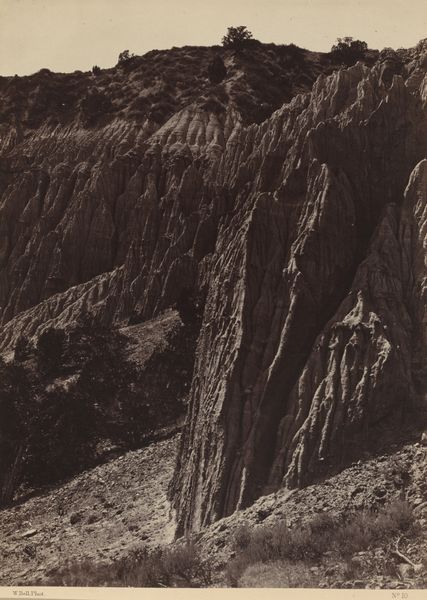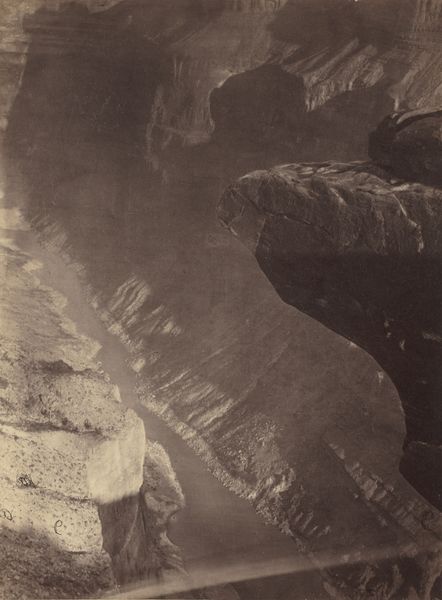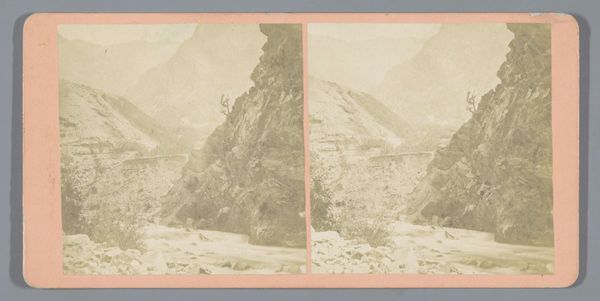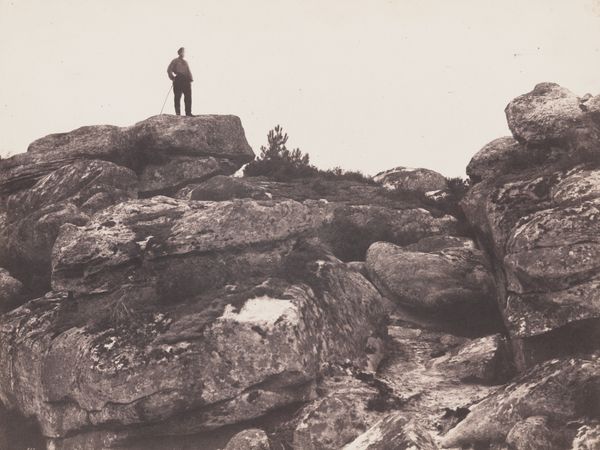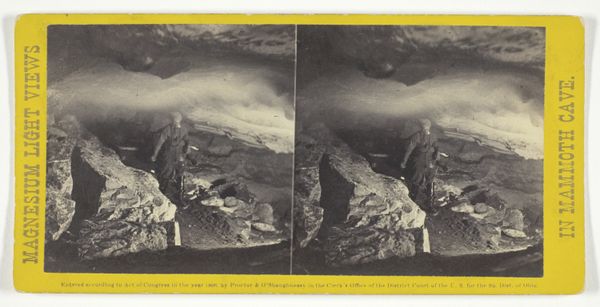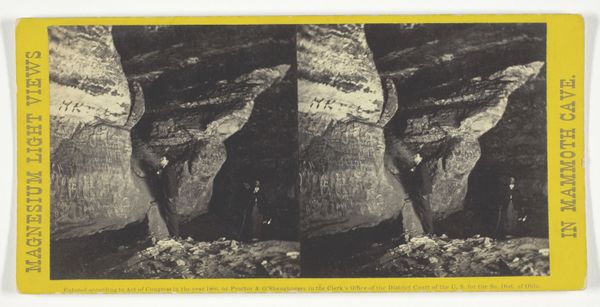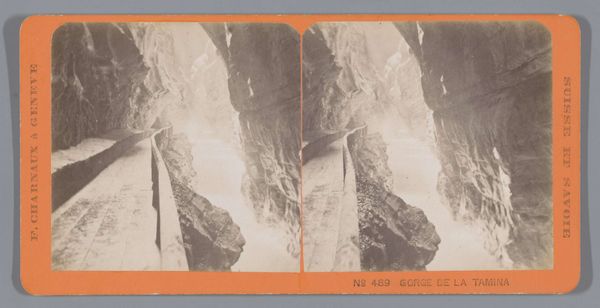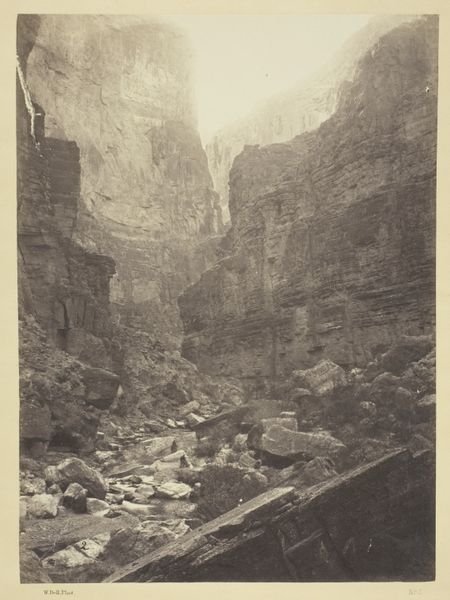
photography, albumen-print
aged paper
still-life-photography
pictorialism
landscape
photography
tonal art
albumen-print
realism
Dimensions: height 290 mm, width 82 mm, height 329 mm, width 243 mm
Copyright: Rijks Museum: Open Domain
Curator: This albumen print, dating to 1906, captures "Overhangende rots, Glacier Point" by the Pillsbury Picture Company. Editor: Immediately striking is the vertiginous drop, a stark, almost abstract composition of layered stone and sheer negative space. There’s a definite drama to the scale and the precarious perch upon which those figures are balanced. Curator: Indeed, the composition masterfully utilizes line and form. Note the stark contrast between the smooth sky and the jagged texture of the rock face. Semiotically, we see a power dynamic created by their positioning on the landscape and our point of view. Editor: From a material perspective, one wonders about the logistics of producing an image like this. This albumen print requires glass plate negatives. How arduous must the process have been to haul the necessary equipment and chemicals to such a remote location? Also, what motivated these early tourists and picture companies, often working for railway publicity departments, to promote a vision of awe-inspiring scenery for the masses? Curator: It’s an engagement, truly. We’re invited into a conversation about how we read landscapes and represent scale in the medium. I observe an intentional orchestration. It may very well speak about what late 19th-century visual rhetoric, the sublime, the picturesque—meant to the viewer. Editor: I would say that is the crucial thing here; labor shapes what can be viewed and sold; images such as these helped build markets for Western expansion. The narrative it supported often denied the original people who inhabited and used the landscapes differently. Curator: This image allows for just that sort of layering of inquiry and provides ample space for debate over intent, content, and composition. Editor: The image makes us think about nature’s sublime scale—that speaks to not only what’s within but also what the photograph represents in its construction and sale.
Comments
No comments
Be the first to comment and join the conversation on the ultimate creative platform.
